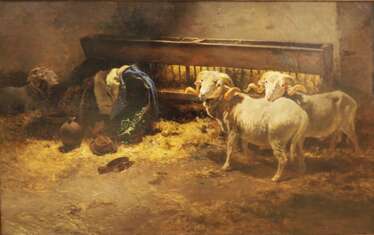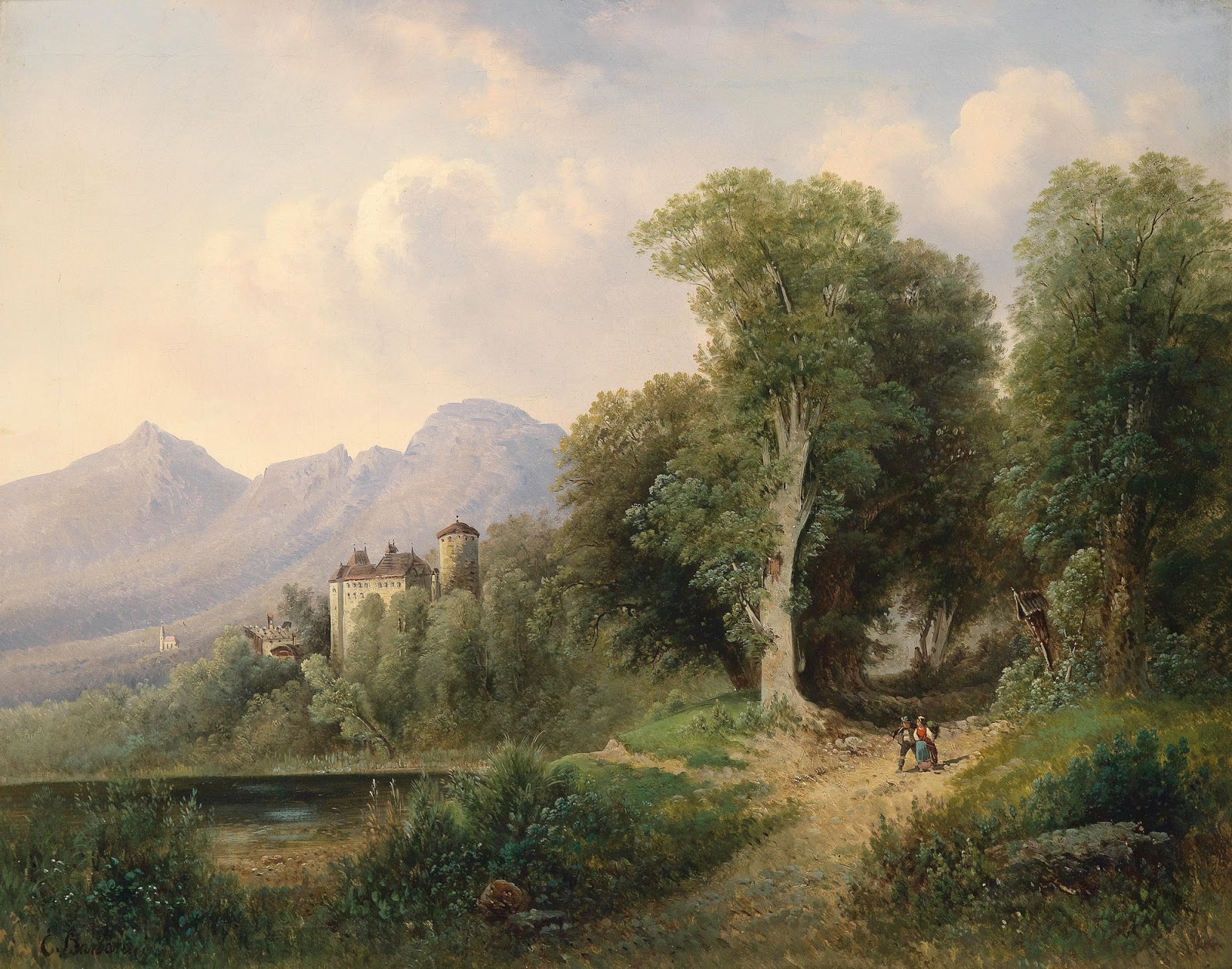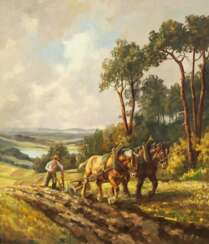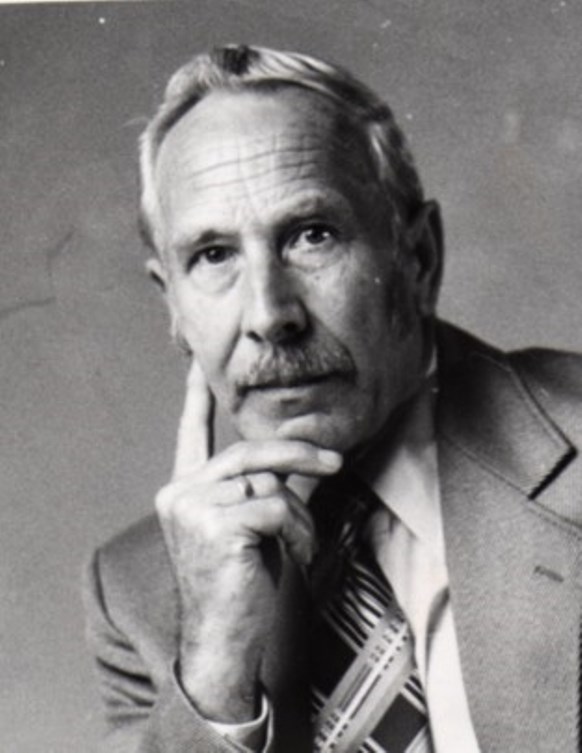
Paintings, graphics, watercolours and drawings — 43. Auktion: Kunst und Antiquitäten

Jakob Bräckle, a German painter, overcame physical challenges caused by a childhood vaccination mishap. He pursued art education at Stuttgart's Kunstgewerbeschule and later the Akademie der Bildenden Künste. Returning to his roots in Winterreute in 1923, Bräckle's journey took an unexpected turn in 1938 when he joined the NSDAP out of fear of persecution as a disabled artist. Despite this, his depictions of rural life thrived during the Nazi era.
In the late 1940s, influenced by Kasimir Malewitsch's works, Bräckle transitioned from small-scale rural scenes to large-format concrete art, removing human figures from his paintings entirely. His art found simplicity in monochromatic fields, notably in "Gelbes Feld" (1981). Bräckle resided humbly in Biberach's Talfeld district from 1937, where his modest studio now stands in the Braith-Mali-Museum, preserving his legacy. His artistic evolution, as he described in 1957, aimed for the "utmost simplicity" in his quest for abstraction, departing from naturalistic representations.
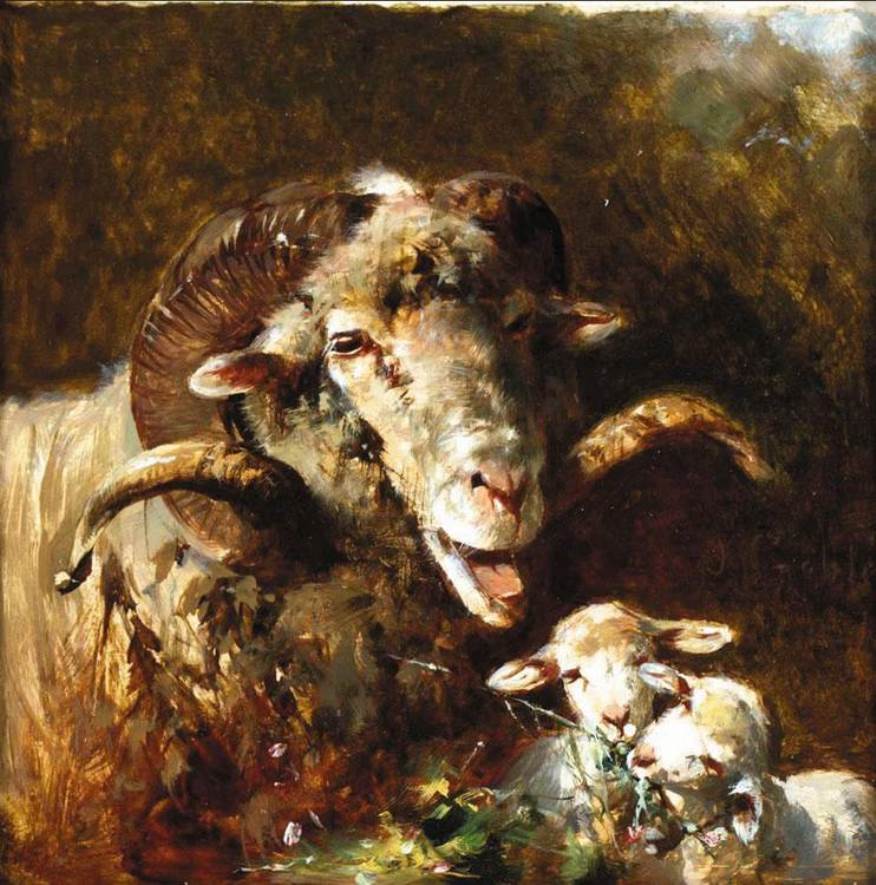
Friedrich Otto Gebler was a German animal painter.
Gebler studied at the academies in Dresden and Munich and specialized in rural themes and animalistic painting. The main character in Goebler's paintings is sheep, the life of which he studied thoroughly. The sheep graze, rest, worry, there are even expressive portraits of sheep. Contemporary critics have recognized him as the best artist in this subject.
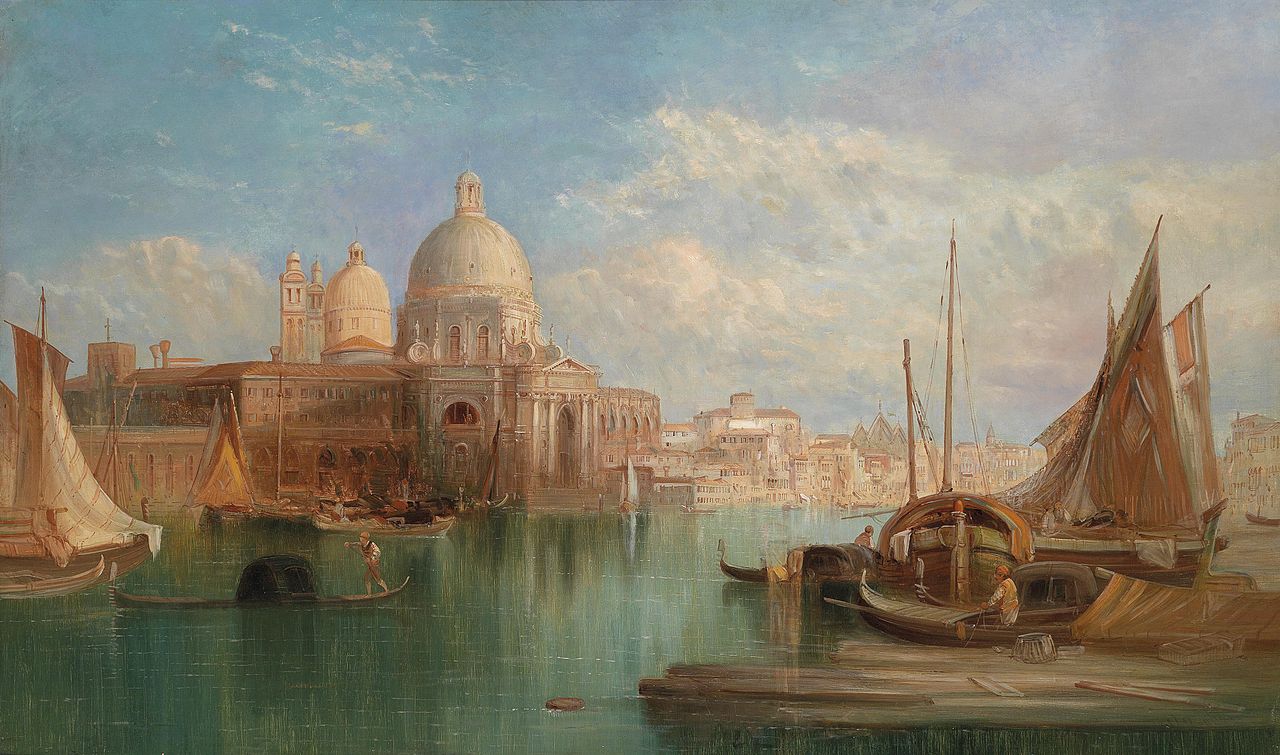
Alfred Pollentine is a British landscape painter. He specialised in Venetian scenes.
Pollentine developed his own very recognisable style of warm and whimsical scenes that blended everyday life with moving architecture to reflect the full romance of the city. He painted them in a loose impressionistic style that is always rich in colour and painted in a complex palette: figures, water, boats and buildings are vigorously depicted in a swirl of brushstrokes.
 Sckell.jpg)
Ludwig Sckell was a German landscape painter, representative of late Romanticism, member of the Academy of Fine Arts in Munich.
In his elaborate paintings we see beautiful Bavarian landscapes. Sckell's works were often miniature in size, which added to their charm.
His son was the landscape painter Louis Sckell (1869-1950).




